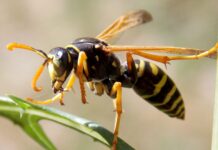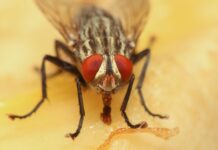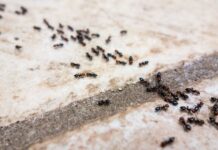Choosing the right bedding for your chickens and ducks during winter is essential for keeping them warm, dry, and healthy. The ideal bedding should provide insulation, absorb moisture, and create a comfortable environment for your birds. This guide explores the best bedding options for winter, including straw, wood shavings, and other materials, and explains how to manage bedding to prevent frostbite and respiratory issues.
1. Straw: A Top Choice for Insulation
Straw is one of the most popular bedding materials for chickens and ducks in winter due to its excellent insulating properties. It is light, fluffy, and traps warm air, making it an ideal choice for keeping your birds comfortable.
Benefits of straw:
- Great Insulation: Straw’s hollow structure helps trap heat, keeping chickens and ducks warmer during cold weather. It provides a cozy environment for your birds, particularly at night when temperatures drop.
- Cost-Effective: Straw is affordable and widely available, making it a convenient option for many backyard poultry keepers.
- Good for Nesting: Straw is perfect for lining nesting boxes, providing hens with a comfortable and warm space for laying eggs.
Management tips for straw bedding:
- Replace Wet Straw Regularly: While straw is great for warmth, it can become wet and compacted quickly, especially with ducks who love to splash water. Replace wet areas frequently to avoid damp bedding that can lead to frostbite or respiratory issues.
- Deep Litter Method: You can use the deep litter method with straw, where you continuously add fresh layers on top of old bedding throughout the winter. As the lower layers decompose, they generate heat, further warming the coop or shelter.
2. Wood Shavings: Absorbent and Easy to Manage
Wood shavings are another excellent bedding choice for winter. They are highly absorbent, helping to keep the coop or duck shelter dry, which is critical for preventing frostbite and respiratory problems.
Benefits of wood shavings:
- Highly Absorbent: Wood shavings are great at absorbing moisture, making them a top choice for duck owners since ducks tend to splash water and wet their bedding frequently. Dry bedding helps prevent frostbite and keeps the shelter comfortable.
- Soft and Comfortable: Wood shavings create a soft surface for chickens and ducks to rest on, protecting their feet from the cold ground.
- Easy to Manage: Wood shavings are relatively easy to clean and replace, making them a low-maintenance bedding option. They can also be composted after use.
Management tips for wood shavings:
- Use Larger Shavings: Fine or dust-like shavings can irritate your birds’ respiratory systems. Opt for larger, coarser shavings to reduce dust and keep the air cleaner.
- Mix with Straw: To maximize warmth and absorbency, you can mix wood shavings with straw. The straw provides insulation, while the shavings absorb moisture, creating a balanced bedding solution.
3. Pine Needles: A Natural and Affordable Option
Pine needles, or pine straw, can be used as a bedding material for chickens and ducks in winter. They provide a natural, affordable alternative that offers good insulation and moisture resistance.
Benefits of pine needles:
- Natural Insulation: Pine needles create a soft, springy layer that provides decent insulation, helping to keep your birds warm during colder months.
- Moisture-Resistant: Pine needles tend to resist moisture better than straw, which makes them an excellent option for ducks, who often create wet areas around waterers.
- Aromatic: Pine needles give off a pleasant natural scent, which can help keep the coop smelling fresh. They can also deter some pests like lice or mites.
Management tips for pine needles:
- Use in Combination: Pine needles can be mixed with other bedding materials like straw or wood shavings for additional warmth and moisture control.
- Monitor for Dampness: While pine needles are moisture-resistant, wet areas should still be removed regularly to ensure the bedding remains dry and warm.
4. Sand: Best for Dry Areas and Coop Floors
Sand can be an excellent bedding option for chicken coops, especially in areas with drier winters. It provides a firm, stable surface and can help with drainage, keeping the coop dry.
Benefits of sand:
- Easy to Clean: Sand acts like a litter box, making it easy to scoop out droppings. This helps keep the coop clean and reduces the buildup of ammonia.
- Good Drainage: Sand offers excellent drainage, making it a good choice for dry climates or areas where moisture isn’t a major concern. It also prevents water from pooling, which is particularly helpful in duck enclosures.
- Helps Control Foot Issues: Sand helps prevent foot problems in chickens, such as bumblefoot, by providing a firm but gentle surface.
Management tips for sand bedding:
- Not Ideal for Wet Areas: Sand is not the best choice for wet, cold climates, as it can become cold and compacted when damp. It’s best used in dry areas or regions with milder winters.
- Mix with Other Materials: To increase warmth and comfort, you can mix sand with straw or shavings, especially in nesting boxes or sleeping areas where ducks and chickens need extra insulation.
5. Shredded Paper: An Eco-Friendly Option
Shredded paper is an eco-friendly, recyclable bedding option that can be used in chicken coops and duck shelters. While not as insulating as straw, it can still provide warmth and comfort.
Benefits of shredded paper:
- Eco-Friendly: If you have access to a lot of newspaper or office paper, shredding it for bedding is an economical and environmentally friendly solution.
- Absorbent: Shredded paper is fairly absorbent and can help manage moisture, though it needs to be replaced more often than other bedding materials.
- Soft Bedding: Paper provides a soft surface for your chickens and ducks, keeping them comfortable during cold weather.
Management tips for shredded paper:
- Combine with Other Bedding: Shredded paper works well when mixed with straw or wood shavings for extra insulation and warmth. It can also be used in nesting boxes to keep eggs clean and cushioned.
- Replace Often: Paper breaks down quickly and can become compacted when wet, so it’s important to replace it frequently to prevent damp conditions.
6. The Deep Litter Method: A Heat-Generating Option
The deep litter method is a popular choice for winter bedding management because it not only provides insulation but also generates heat through the natural decomposition of bedding and droppings. This method can be used with materials like straw or wood shavings.
How the deep litter method works:
- Layer Bedding: Start by laying down several inches of straw or wood shavings. As it gets soiled, simply add more bedding on top without cleaning out the old layers.
- Natural Composting: Over time, the bottom layers will begin to decompose, creating natural warmth for the coop or shelter. This composting effect helps insulate the floor and keeps the coop warmer in winter.
- Less Frequent Cleaning: The deep litter method allows you to go longer between full coop cleanings, as you’re only adding fresh layers rather than removing the old bedding constantly.
Management tips for the deep litter method:
- Turn the Bedding Occasionally: To encourage composting and prevent ammonia buildup, you should turn the bedding with a pitchfork occasionally to mix in droppings and aerate the material.
- Monitor Moisture Levels: Keep an eye on moisture levels, especially in duck shelters where wet bedding can accumulate quickly. If the bedding becomes too damp, it can lead to mold or respiratory problems for your birds.
Final Thoughts
The best bedding for chickens and ducks in winter is one that provides warmth, absorbs moisture, and creates a comfortable environment. Straw and wood shavings are the top choices due to their insulating and absorbent qualities, while materials like pine needles, sand, and shredded paper can also be used depending on your climate and needs. By managing bedding properly and keeping it dry, you’ll help protect your birds from cold stress, frostbite, and health issues during the colder months.










